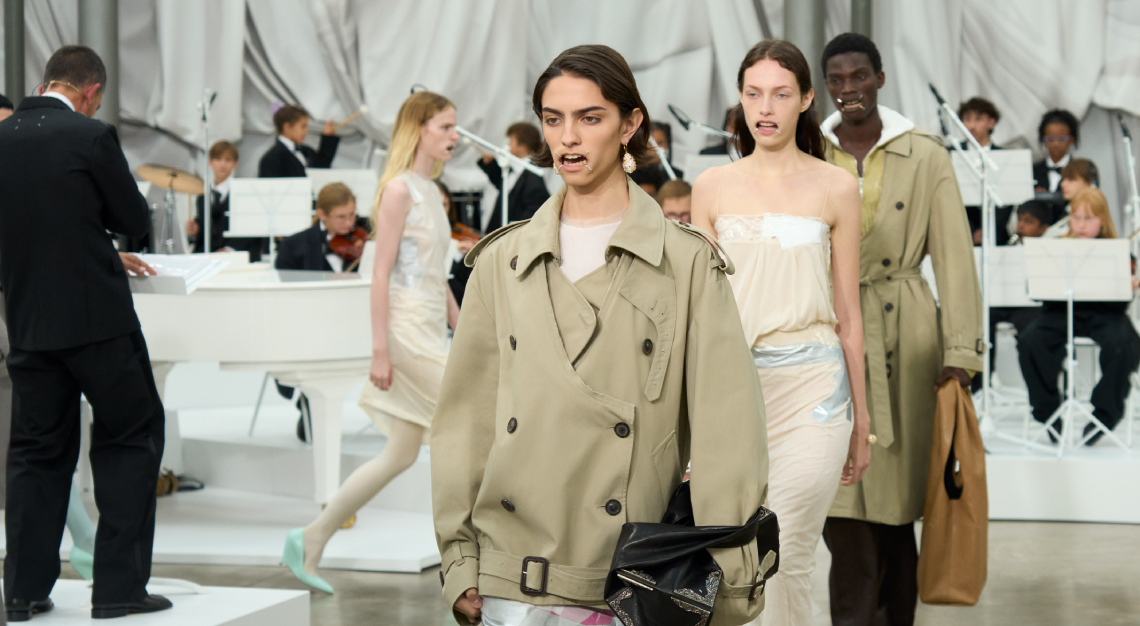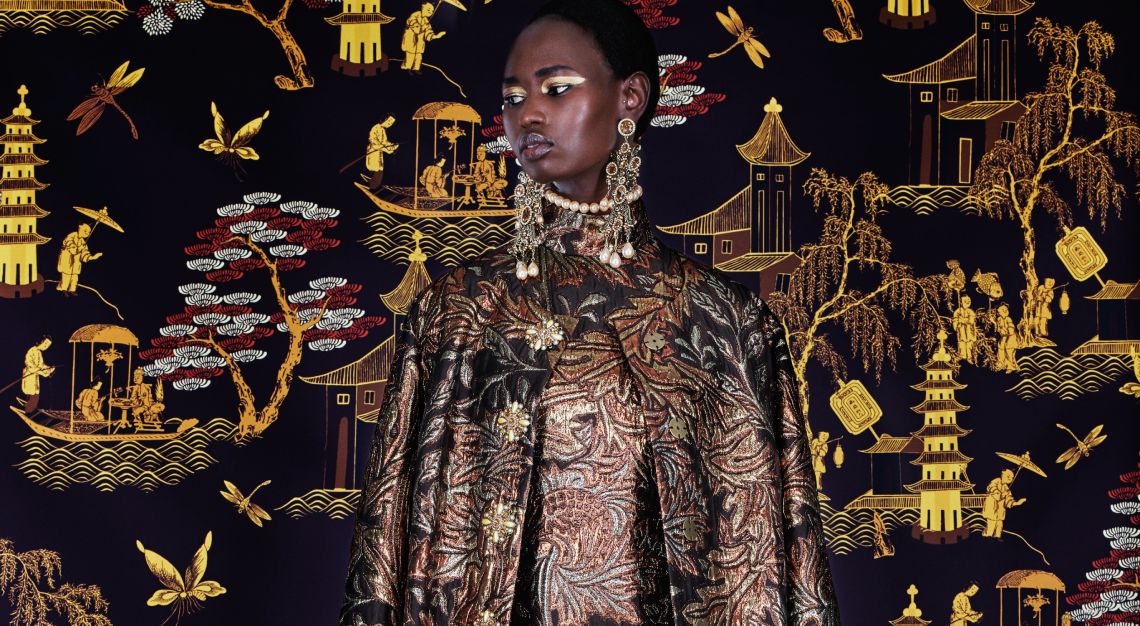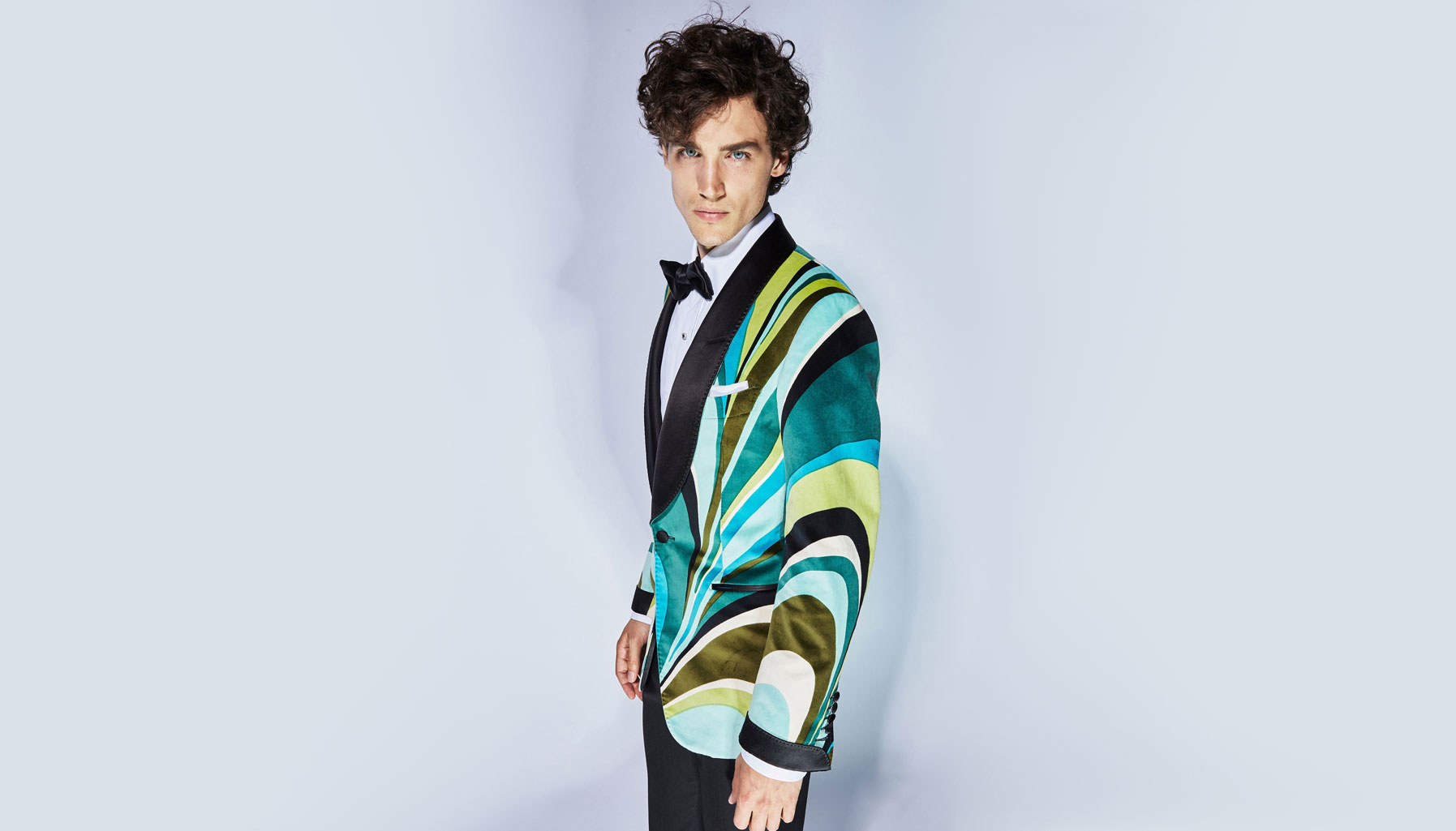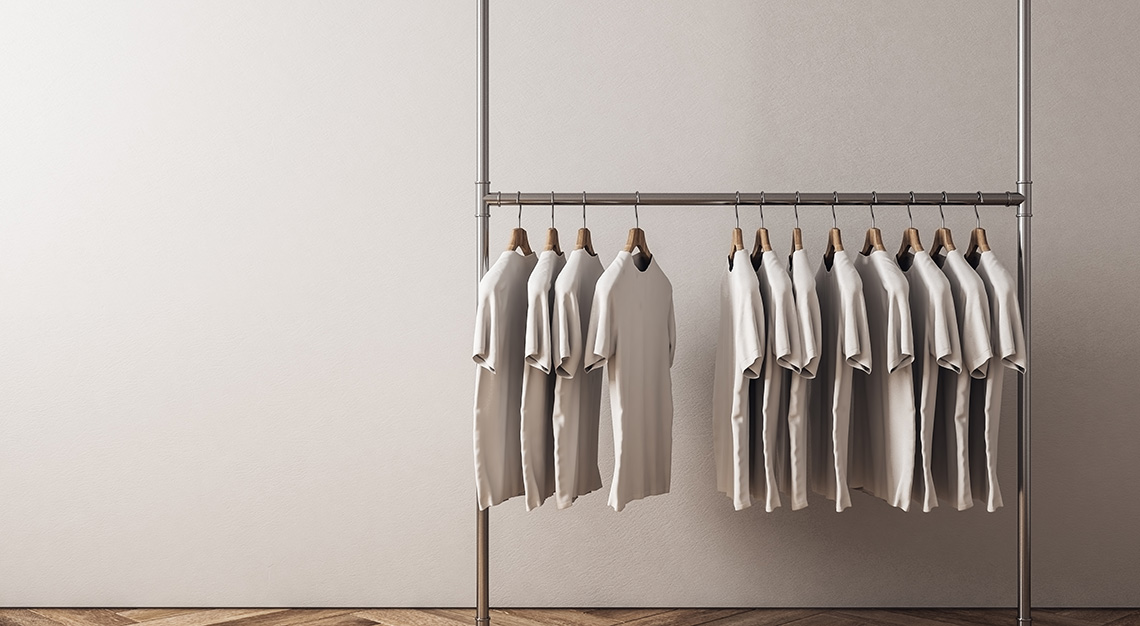Glenn Martens makes his debut at Maison Margiela with a Spring/Summer 2026 collection that draws on both new and archival ideas
At the Maison Margiela Spring/Summer 2026 show in Paris, precision met unpredictability, literally. The presentation opened with a live performance by an orchestra of 61 young musicians from Romilly-sur-Seine, brought together by the Orchestre à l’École association.
As the house lights dimmed, their tentative notes—Strauss, touching Mozart, drifting toward Prokofiev—ripple through the hall. It’s not polished; it’s messy. It’s human. Their imperfect harmonies set an honest tone: collaboration, experimentation, and the beauty of work in progress—themes that echoed throughout Glenn Martens’ latest collection.
The collection opened with a proposal for tailoring that reexamined the fundamentals of structure. The “tuxedo waistcoat” front established the season’s silhouette: a sharply rounded shoulder cut with a dart, the armhole tracing the natural line of the socket. It’s a precise, almost anatomical construction. Pants were cut with an exaggerated drop crotch to elongate the frame, reinforcing Margiela’s signature play with proportion.
Beyond wool and leather, this new tailoring proposition also appeared in denim and in everyday silhouettes like leather jackets, blazers, and trench coats featuring fold-away lapels engineered to be tucked inside and disappear entirely.
Here, Martens also pushes the boundaries of what “outerwear” means. Slip dresses—long and vintage-inspired—are worn over tailored jackets. Shirts and trousers in lining fabric covered full suits, blurring inside and outside. Many of the slip silhouettes were loosely gathered and fixed with tape, a pragmatic counterpoint to couture-level fabrication.
Florals, too, are reimagined: prints scanned from real flowers, laid over draped silk dresses; prints laid according to drape, with creases like negative space, shadow, and fold defining design as much as colour. Another motif: the peeling 16th-century botanical wallpaper—first appeared in the 2025 Artisanal show—evolved and embossed onto knits.
Another key innovation was the idea of “permanent eveningwear”: silk scarves fused directly onto tailored jackets, coats, and tuxedo shirts. Plasticisation—a process introduced in the Artisanal 2025 show—evolved further: silk jackets are entirely plasticised to become rainwear; silk floral dresses are held by a bodice of taping.
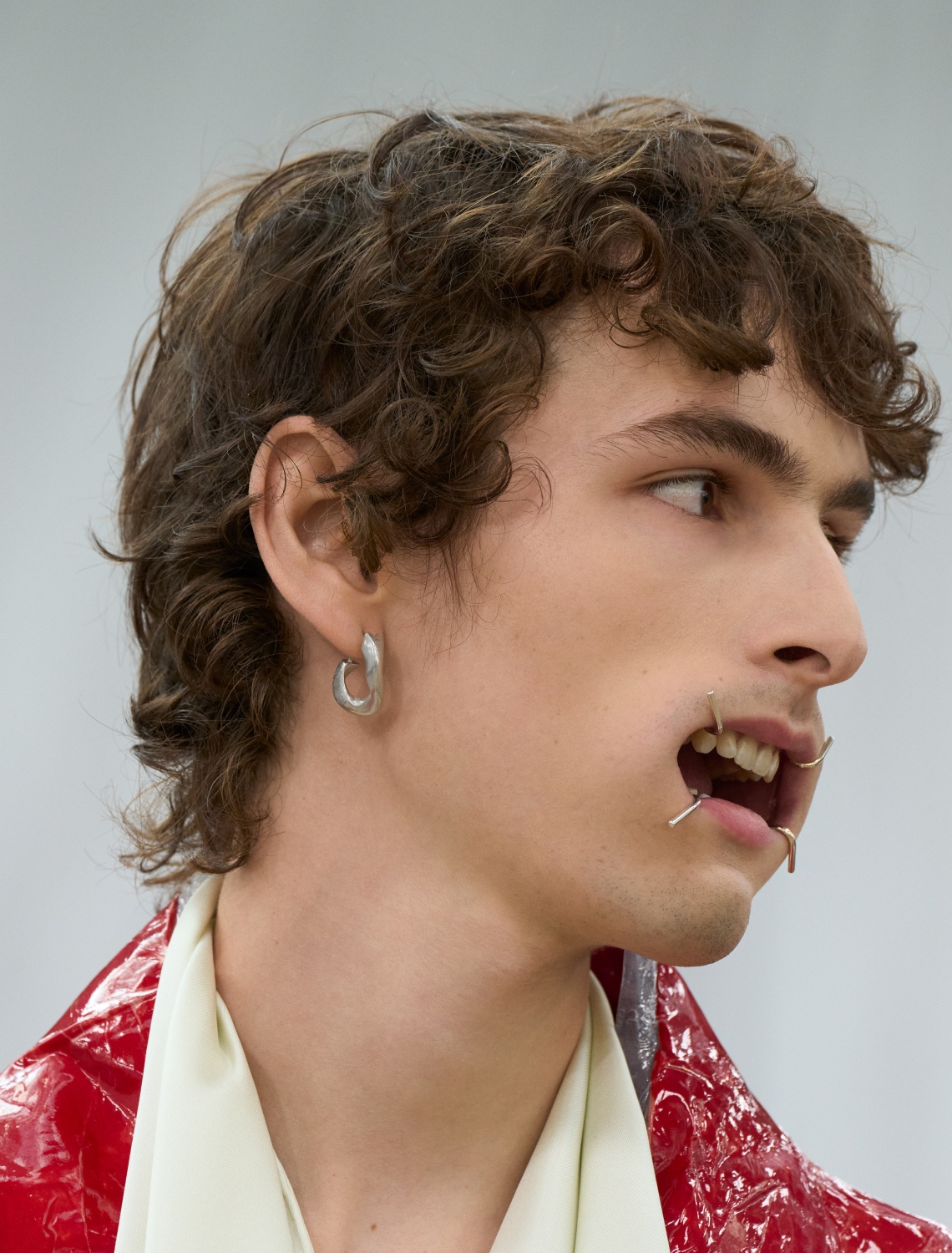
The re-imagination of Margiela doesn’t stop at clothes. Heel-less footwear returns: pumps, western boots, elongated boots all built with hidden structures, defying expectation. The Tabi Claw, first seen in the Artisanal 2025 collection, makes its ready-to-wear debut with a plexiglass heel. The Box Bag reemerges: soft leather, thermoformed edges, convertible straps hiding inside, transforming from shoulder bag to clutch.
Our favourite looks
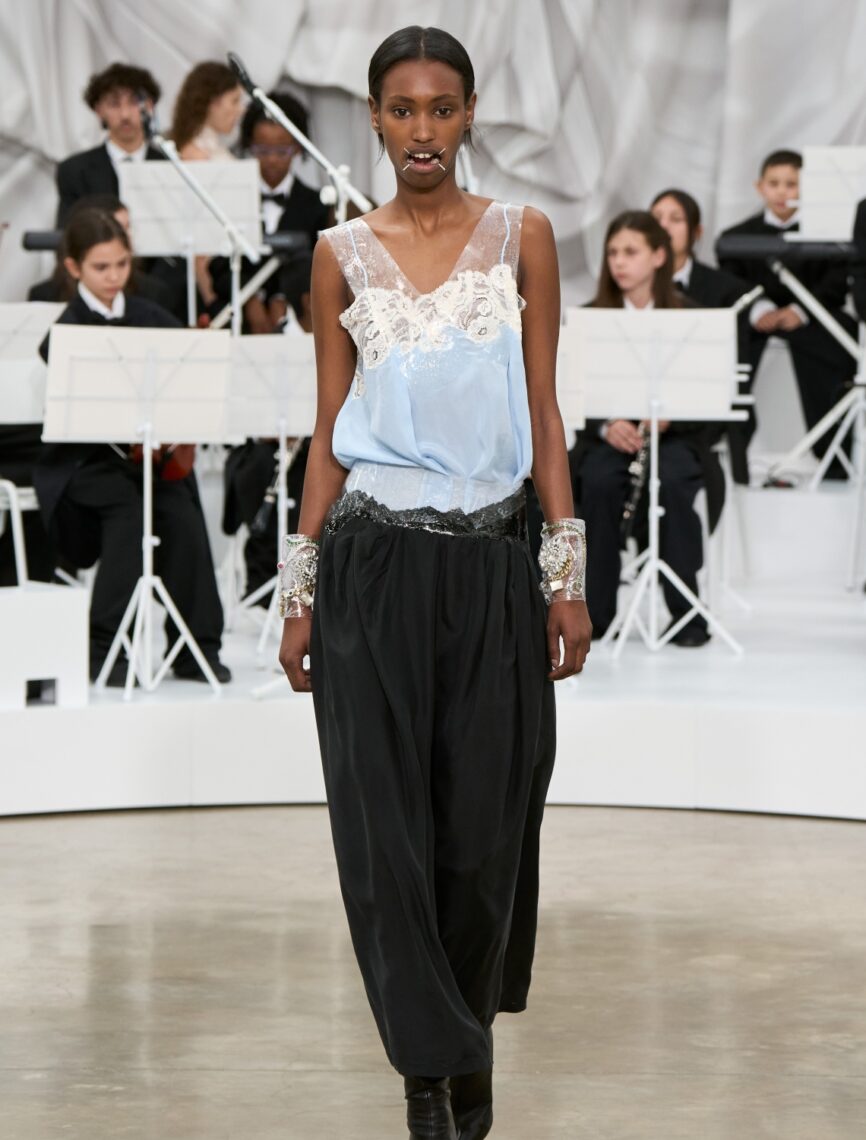
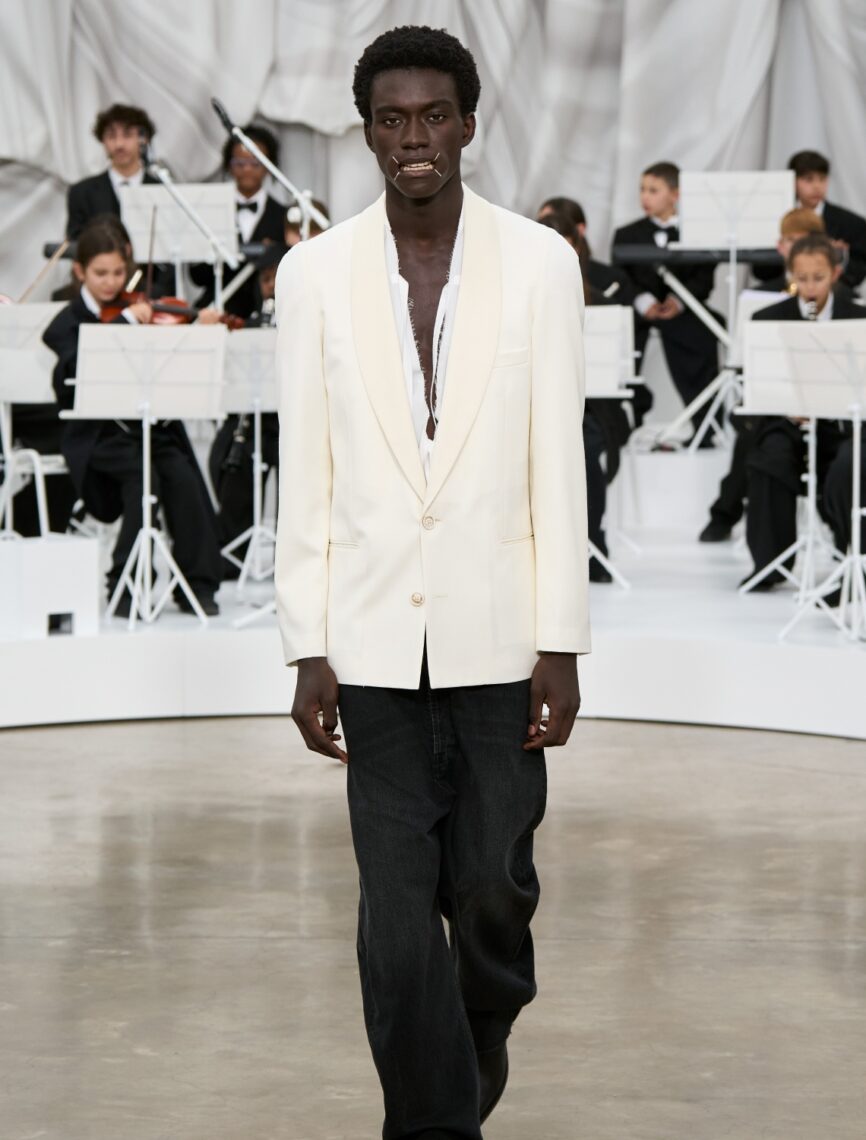
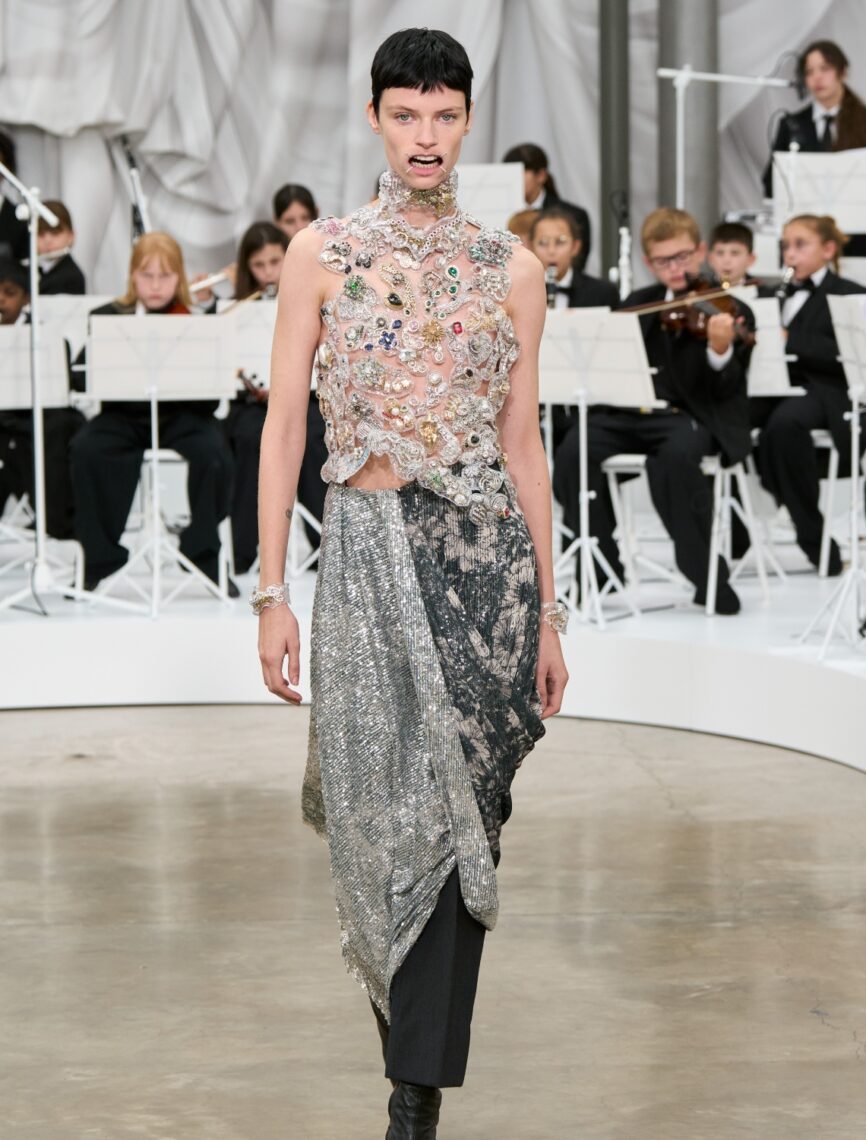
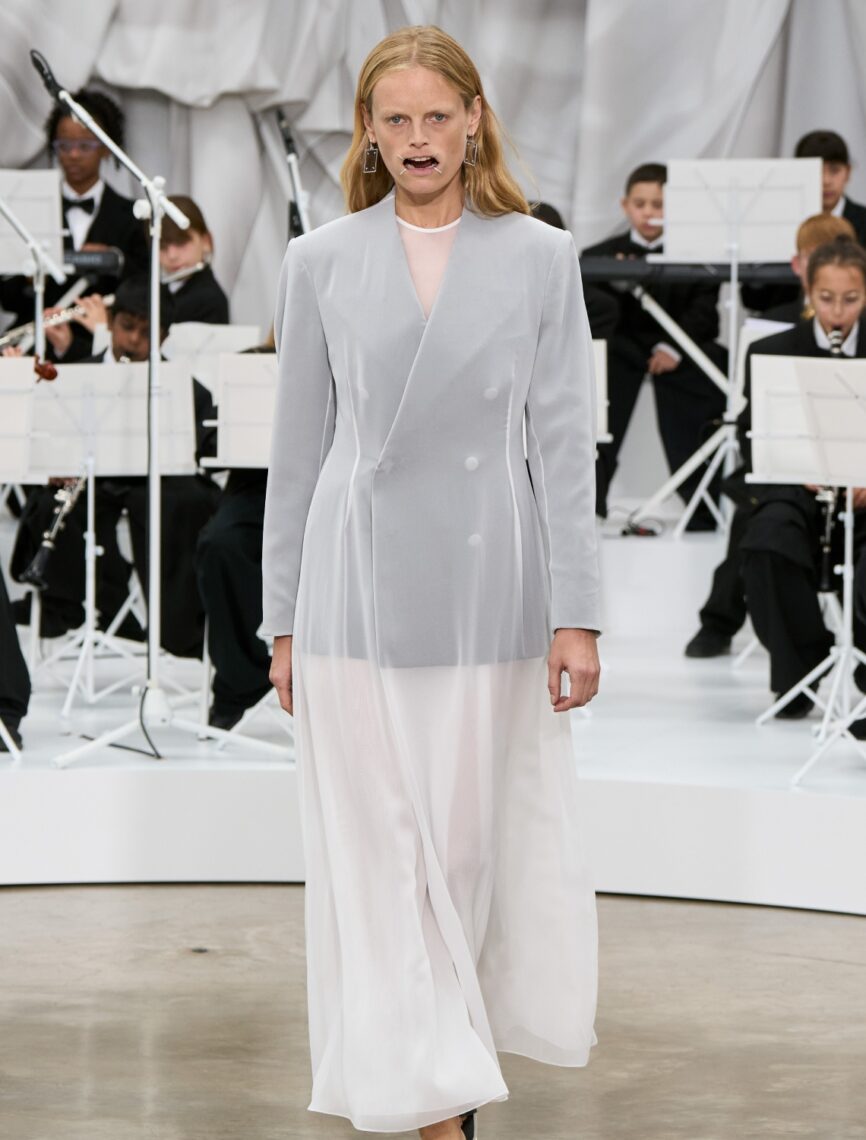
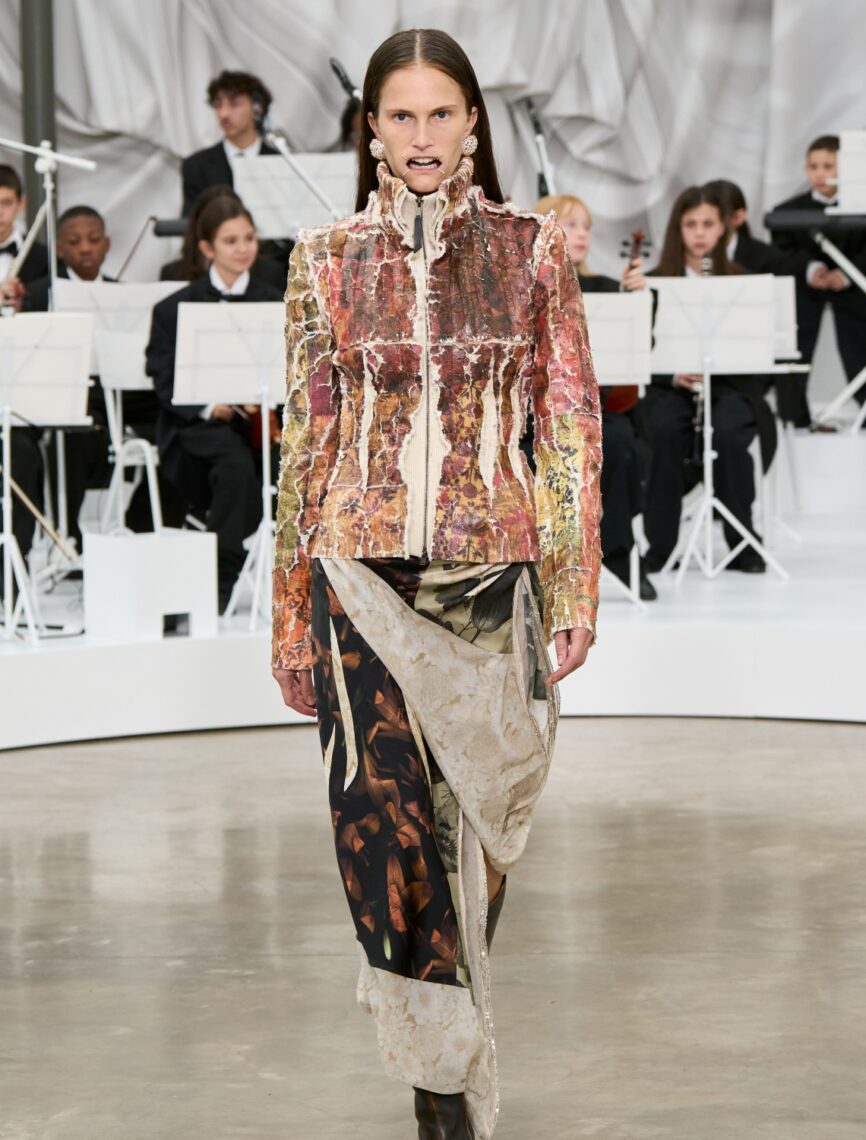
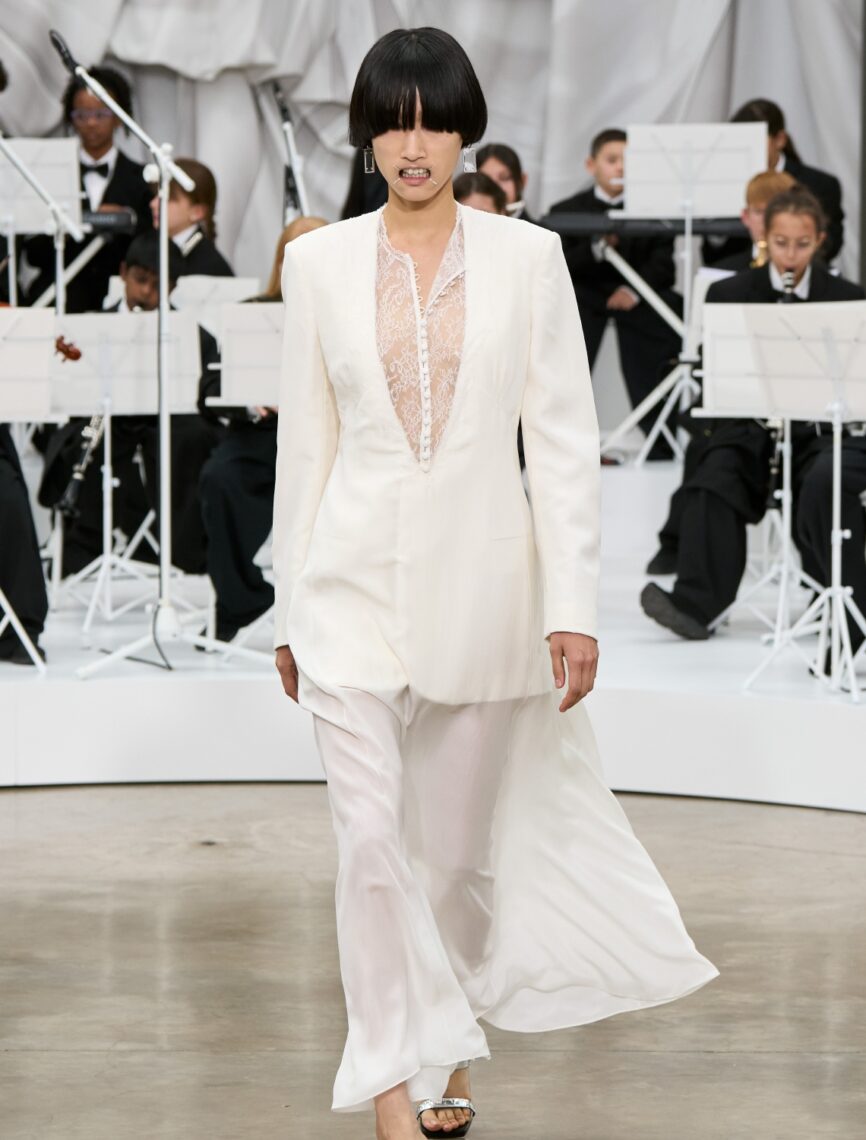
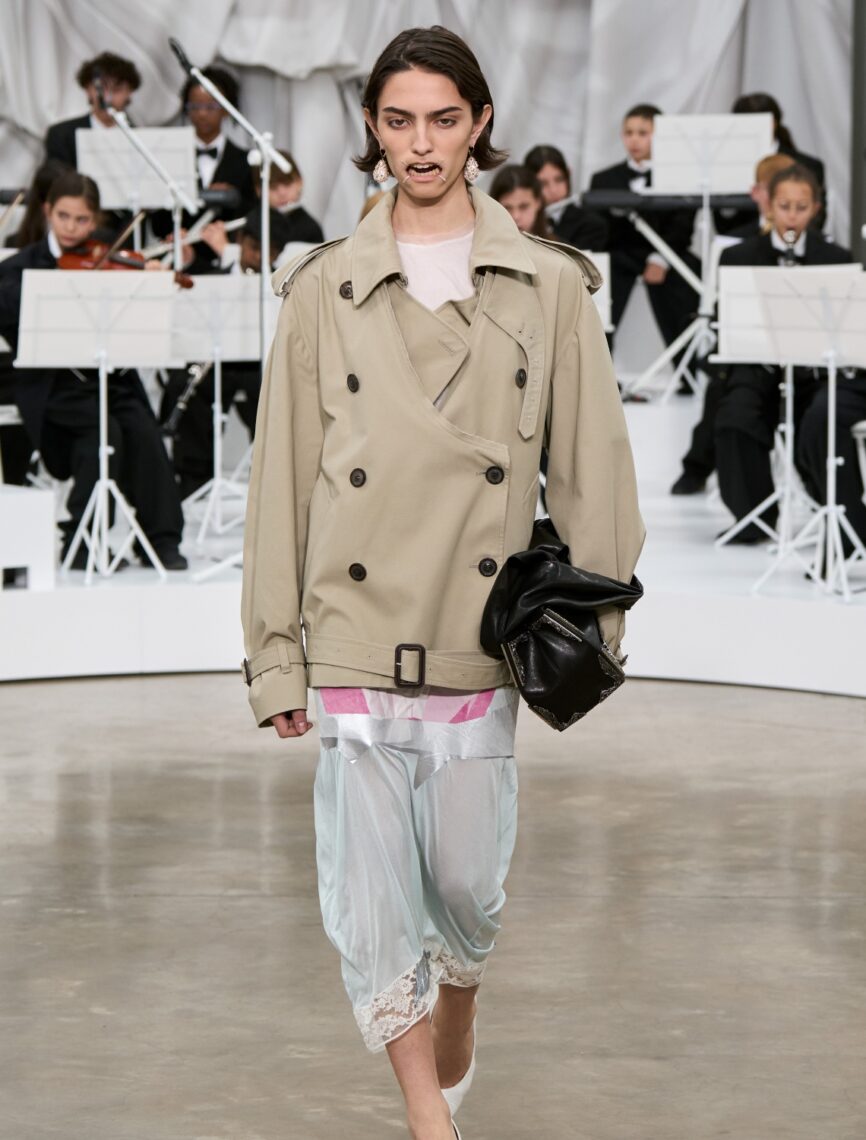
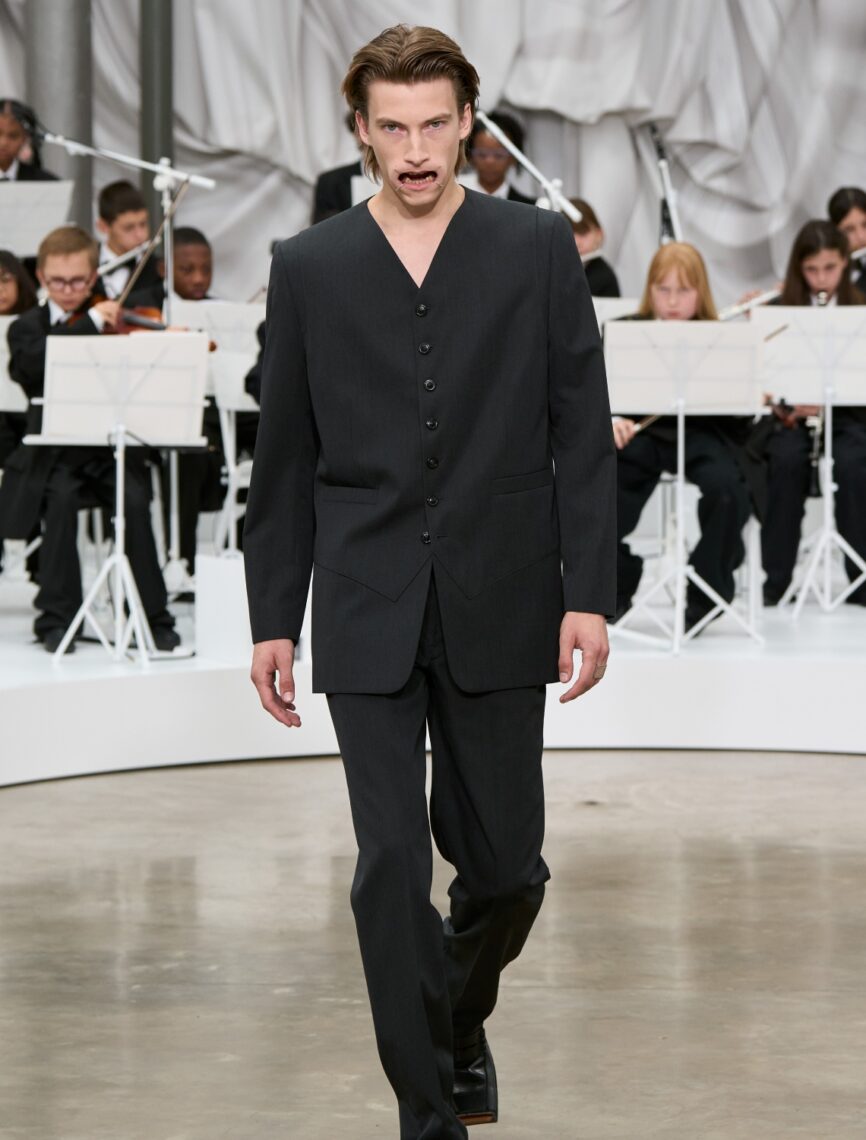
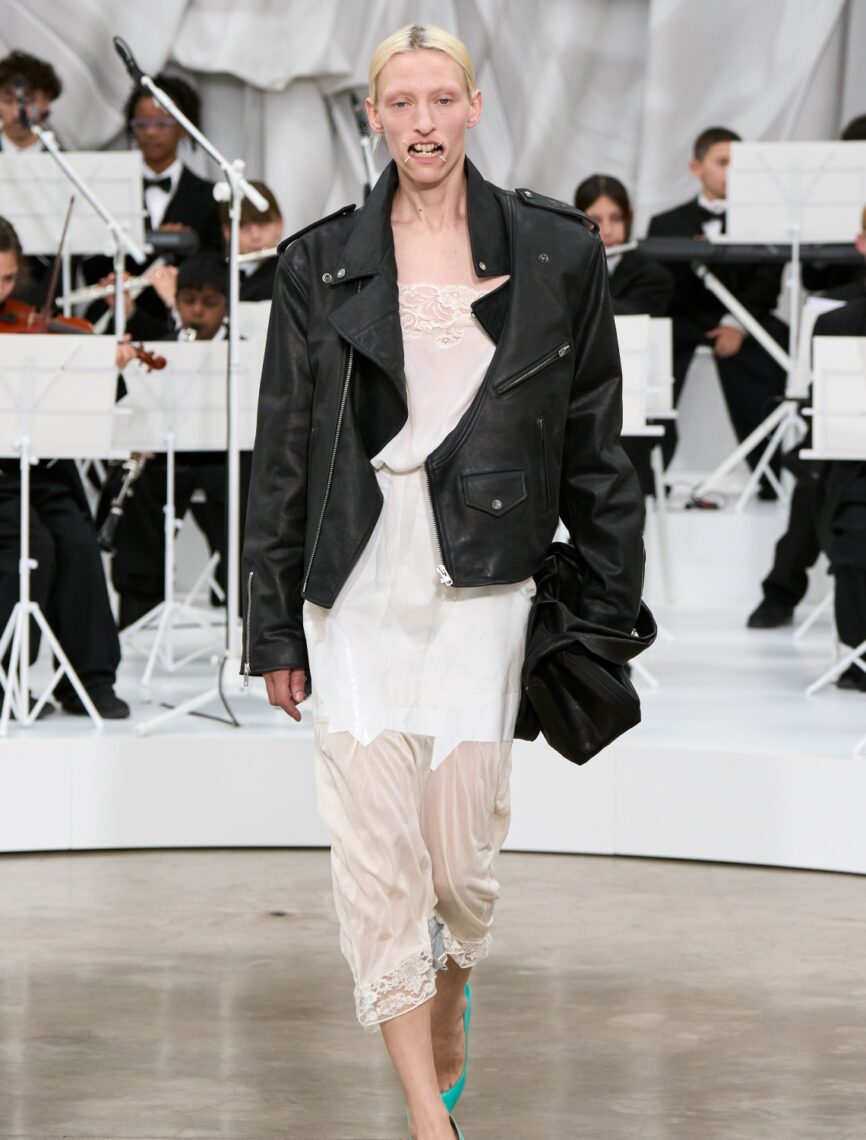
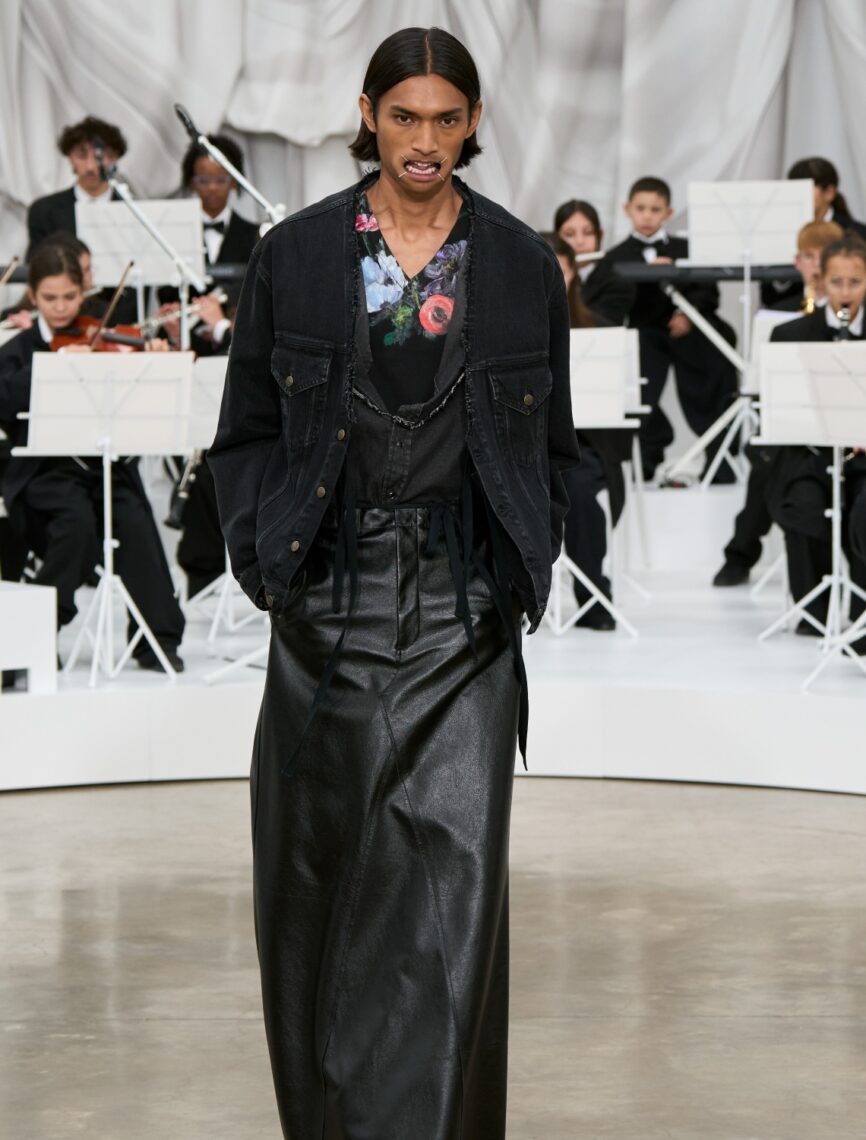
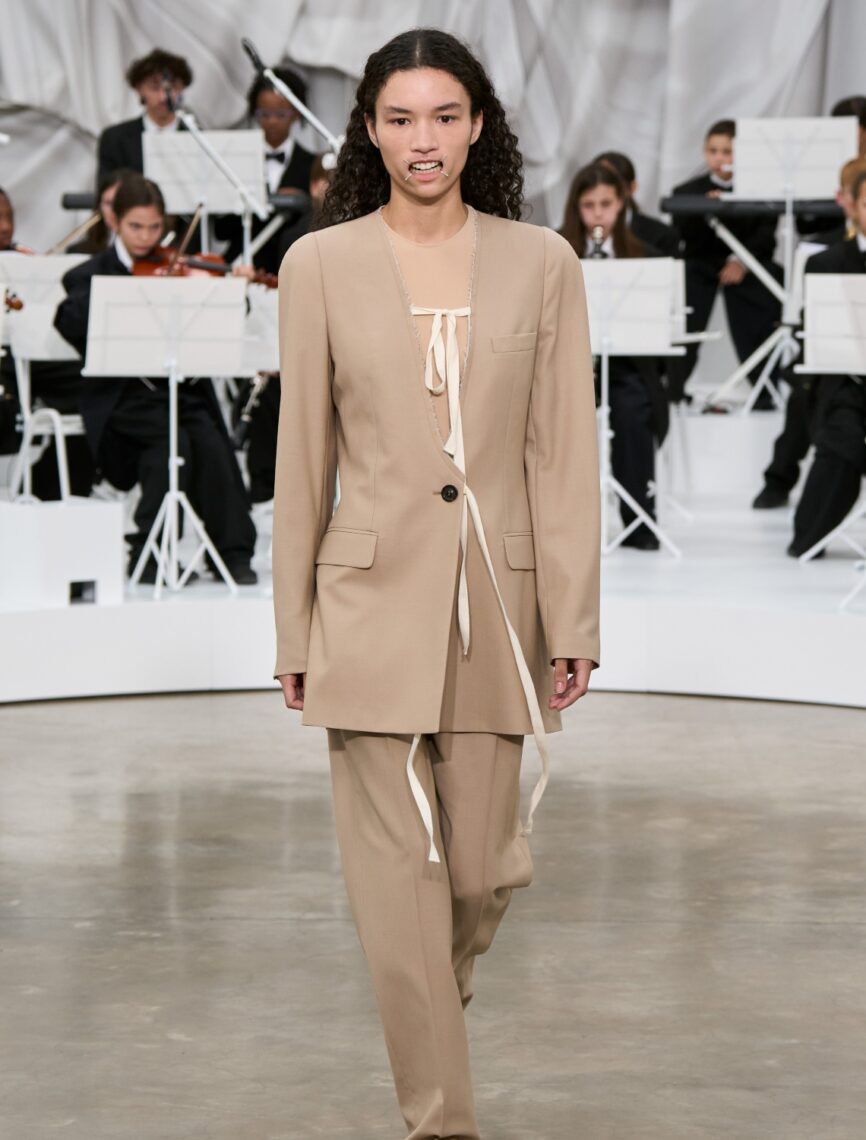
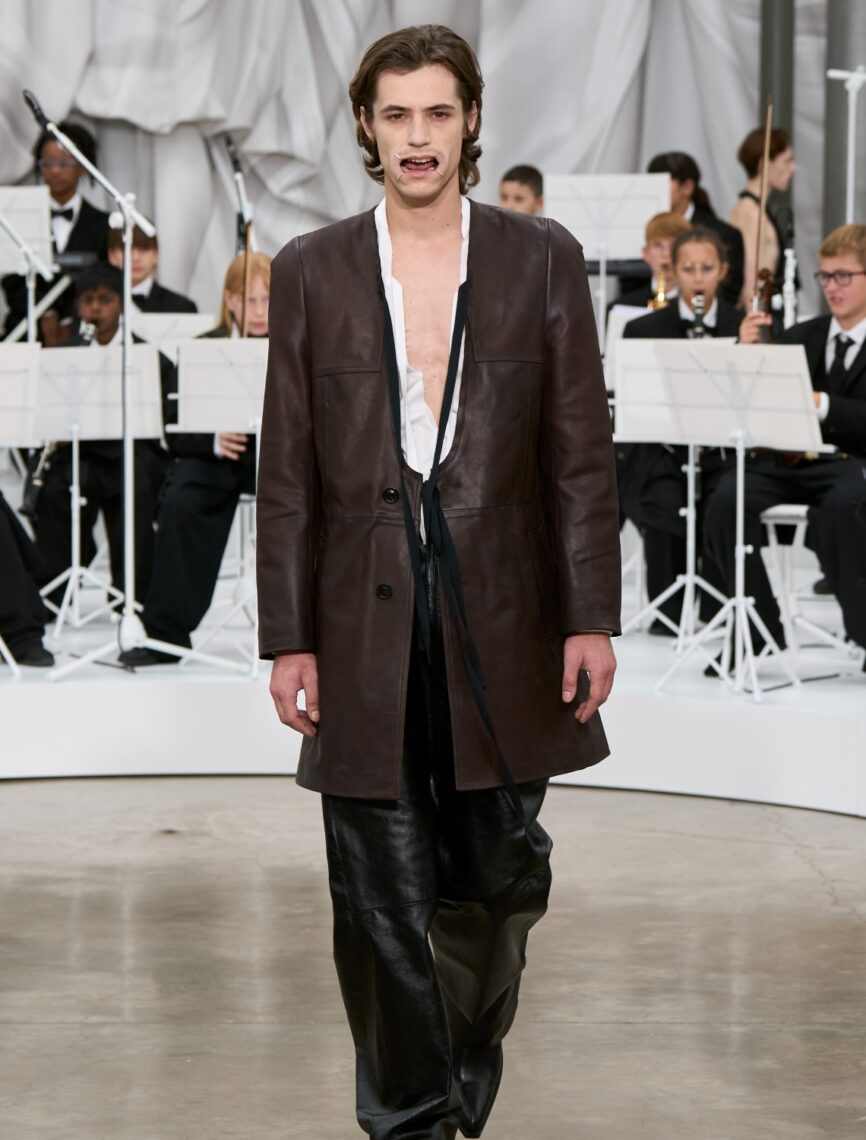
The collection reminds us why Margiela has endured as a house of ideas. With the imperfect squall of youth from Romilly-sur-Seine as prelude, Glenn Martens frames a collection that interrogates the boundaries of tailoring and ornament, erasing inside/outside binaries, and reasserting Margiela’s lineage of subversive refinement. This season, Margiela proves that true luxury lies in challenging norms, embracing imperfection, and transforming even familiar codes into something unexpectedly sophisticated.
